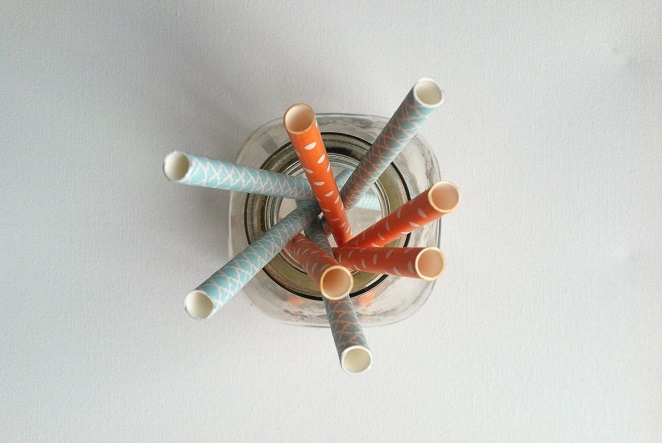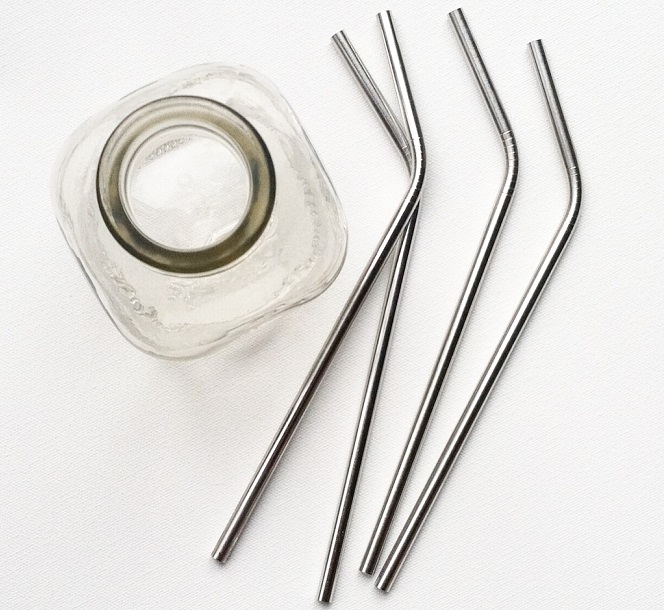 Americans use an unbelievable amount of disposable straws. The number? 500 million drinking straws every day, according to the National Park Service (NPS). Many environmental groups think this amount, while quite high, many not be accurate, as it does not account for the disposable straws that are attached to juice boxes and milk cartons. But we can all agree: This amount is too high considering the negative environmental impacts these disposable straw are having on our planet.
Over the past quarter century, plastic straws have routinely been one of the top 10 items found on beaches around the world during the International Coastal Cleanup, according to Ocean Conservancy. Ocean Conservancy volunteers have picked up so many straws from beaches and waterways that when put end-to-end, “they would span a distance equal to California’s 840 miles of coastline. And last year alone, enough disposable plastic straws were found to pop one into your beverage every day for the next 1,250 years.”
From Choose to Be Straw Free:
Americans use an unbelievable amount of disposable straws. The number? 500 million drinking straws every day, according to the National Park Service (NPS). Many environmental groups think this amount, while quite high, many not be accurate, as it does not account for the disposable straws that are attached to juice boxes and milk cartons. But we can all agree: This amount is too high considering the negative environmental impacts these disposable straw are having on our planet.
Over the past quarter century, plastic straws have routinely been one of the top 10 items found on beaches around the world during the International Coastal Cleanup, according to Ocean Conservancy. Ocean Conservancy volunteers have picked up so many straws from beaches and waterways that when put end-to-end, “they would span a distance equal to California’s 840 miles of coastline. And last year alone, enough disposable plastic straws were found to pop one into your beverage every day for the next 1,250 years.”
From Choose to Be Straw Free: - Most disposable plastic straws are made from polypropylene, a petroleum bi-product.
- Plastic constitutes 90 percent of all trash floating in the world’s oceans.
- Forty-four percent of all seabird species and 22 percent of cetaceans have ingested plastic.
And not only do plastic straws either end up in our landfills or waterways, the plastic itself is a problem. Plastic does not biodegrade, it photodegrades, which means it breaks down into smaller and smaller pieces of toxic plastic that wreak havoc on the environment.
 Stainless steel straws: Stainless steel straws are made from medical-grade stainless steel, which is non-corrosive and non-reactive so the straws will not absorb flavors or odors. These straws can be used over and over again and can be found at a number of retailers. For example, Sur la table, William Sonoma and online.
Glass straws: Glass straws are beautiful and do not leach toxins into your food as you drink (which is another complaint about disposable plastic straws). Glass Dharma glass straws are hand-made in the USA.
Paper straws: Although this option is still a single-use product, there are times when you need a straw for a large group like a birthday party or other event. Aardvark paper straws were introduced in 2007 “primarily in response to a growing anti-plastic movement. Restaurants, hospitals and other services industries, the main buyers of plastic straws in the US, were forced to look for more sustainable, eco-friendly options.” Aardvark paper straws are the only paper straws on the market that are made in the USA, 100 percent FDA food-grade approved, biodegradable and compostable. They are also adorable.
Bamboo straws: Bamboo straws are sustainable, reusable and biodegradable. They are made without inks and dyes; they are also durable and beautiful. For more information, visit http://www.bambuhome.com/.
Stainless steel straws: Stainless steel straws are made from medical-grade stainless steel, which is non-corrosive and non-reactive so the straws will not absorb flavors or odors. These straws can be used over and over again and can be found at a number of retailers. For example, Sur la table, William Sonoma and online.
Glass straws: Glass straws are beautiful and do not leach toxins into your food as you drink (which is another complaint about disposable plastic straws). Glass Dharma glass straws are hand-made in the USA.
Paper straws: Although this option is still a single-use product, there are times when you need a straw for a large group like a birthday party or other event. Aardvark paper straws were introduced in 2007 “primarily in response to a growing anti-plastic movement. Restaurants, hospitals and other services industries, the main buyers of plastic straws in the US, were forced to look for more sustainable, eco-friendly options.” Aardvark paper straws are the only paper straws on the market that are made in the USA, 100 percent FDA food-grade approved, biodegradable and compostable. They are also adorable.
Bamboo straws: Bamboo straws are sustainable, reusable and biodegradable. They are made without inks and dyes; they are also durable and beautiful. For more information, visit http://www.bambuhome.com/.
What Can You Do?
Avoid using disposable straws, because although most plastic straws could be recycled, most straws do not get recycled. Request a straw-free beverage when you are eating out and shop for plastic-free alternatives for your family.Eco-Friendly Options
For those of you who can’t live without a straw in your drink, here are some better options: Stainless steel straws: Stainless steel straws are made from medical-grade stainless steel, which is non-corrosive and non-reactive so the straws will not absorb flavors or odors. These straws can be used over and over again and can be found at a number of retailers. For example, Sur la table, William Sonoma and online.
Glass straws: Glass straws are beautiful and do not leach toxins into your food as you drink (which is another complaint about disposable plastic straws). Glass Dharma glass straws are hand-made in the USA.
Paper straws: Although this option is still a single-use product, there are times when you need a straw for a large group like a birthday party or other event. Aardvark paper straws were introduced in 2007 “primarily in response to a growing anti-plastic movement. Restaurants, hospitals and other services industries, the main buyers of plastic straws in the US, were forced to look for more sustainable, eco-friendly options.” Aardvark paper straws are the only paper straws on the market that are made in the USA, 100 percent FDA food-grade approved, biodegradable and compostable. They are also adorable.
Bamboo straws: Bamboo straws are sustainable, reusable and biodegradable. They are made without inks and dyes; they are also durable and beautiful. For more information, visit http://www.bambuhome.com/.
Stainless steel straws: Stainless steel straws are made from medical-grade stainless steel, which is non-corrosive and non-reactive so the straws will not absorb flavors or odors. These straws can be used over and over again and can be found at a number of retailers. For example, Sur la table, William Sonoma and online.
Glass straws: Glass straws are beautiful and do not leach toxins into your food as you drink (which is another complaint about disposable plastic straws). Glass Dharma glass straws are hand-made in the USA.
Paper straws: Although this option is still a single-use product, there are times when you need a straw for a large group like a birthday party or other event. Aardvark paper straws were introduced in 2007 “primarily in response to a growing anti-plastic movement. Restaurants, hospitals and other services industries, the main buyers of plastic straws in the US, were forced to look for more sustainable, eco-friendly options.” Aardvark paper straws are the only paper straws on the market that are made in the USA, 100 percent FDA food-grade approved, biodegradable and compostable. They are also adorable.
Bamboo straws: Bamboo straws are sustainable, reusable and biodegradable. They are made without inks and dyes; they are also durable and beautiful. For more information, visit http://www.bambuhome.com/.